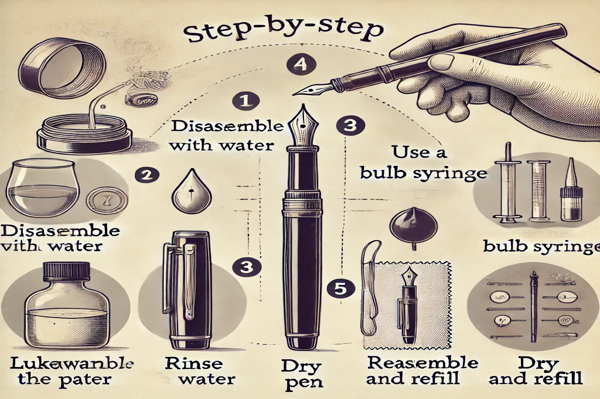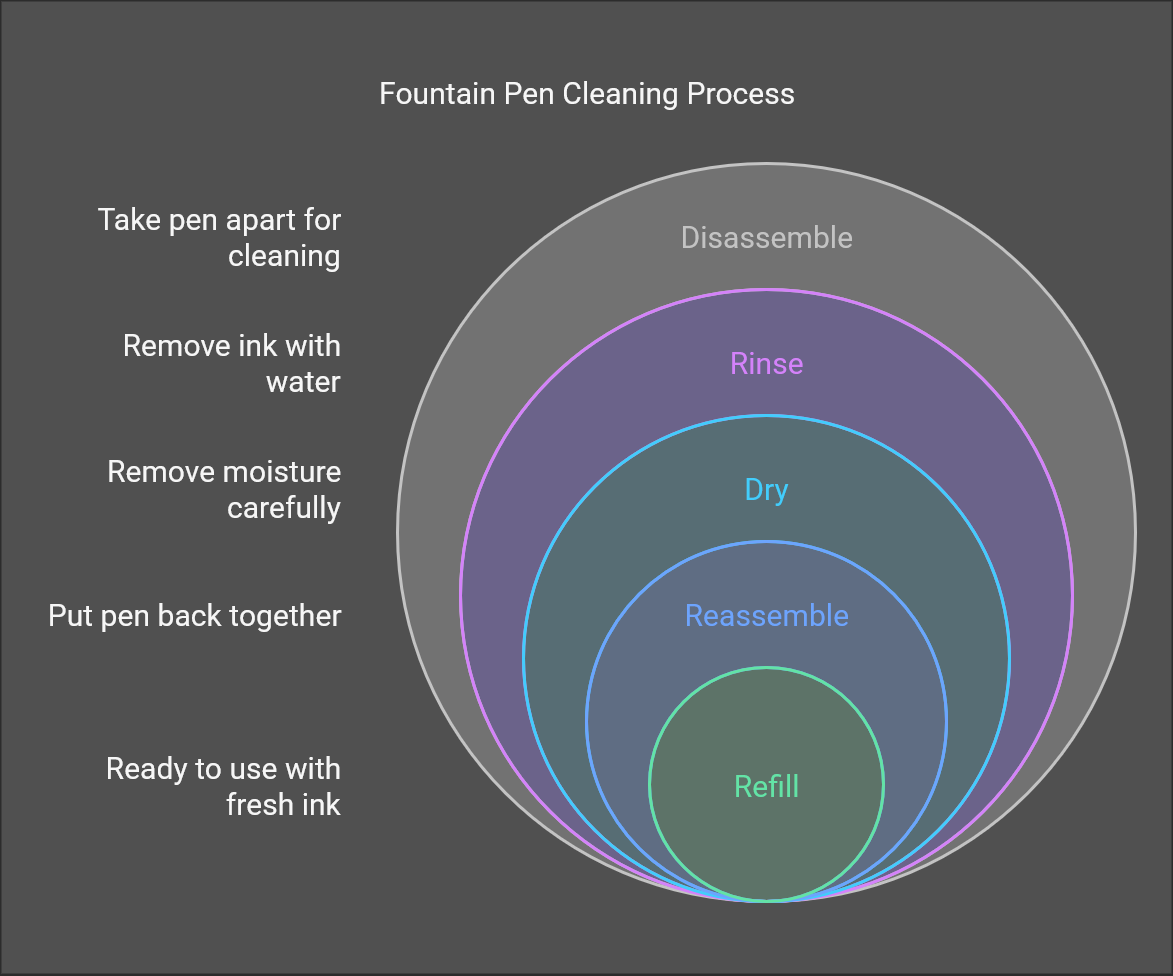The Ultimate Guide to Cleaning Fountain Pens: Keep Your Pen in Top Shape
The Ultimate Guide to Cleaning Fountain Pens: Keep Your Pen in Top Shape
The Ultimate Guide to Cleaning Fountain Pens: Keep Your Pen in Top Shape
Fountain pens offer a writing experience that’s unmatched—smooth ink flow and timeless elegance. But to maintain this performance, fountain pen cleaning is essential. With the right care, you can keep your pen in top condition for years.
Table of Contents
- Why You Should Clean Your Fountain Pen
- When Should You Clean Your Fountain Pen?
- Essential Materials for Cleaning
- Step-by-Step Cleaning Guide
- Advanced Cleaning for Stubborn Ink
- Troubleshooting Fountain Pen Issues
- Maintenance Between Cleanings
- Conclusion
Why You Should Clean Your Fountain Pen
A fountain pen relies on capillary action to move ink from reservoir to nib. Residue, dried ink, or dust can cause skipping or clogging. Regular fountain pen maintenance ensures smooth writing and extends your pen’s life.
When Should You Clean Your Fountain Pen?
- Ink type: Shimmering or pigment inks require frequent cleaning.
- Usage: Daily use = clean every 1–2 months. Infrequent use = more often.
- Switching colors: Always flush to avoid ink contamination.
Essential Materials for Cleaning
- Lukewarm or distilled water
- Soft cloth or paper towels
- Small cup or container
- Bulb syringe (optional)
- Pen flush (optional)
Step-by-Step Cleaning Guide
Step 1: Disassemble the Pen
Remove cap, barrel, and ink cartridge or converter. Avoid dismantling nib/feed unless skilled.
Step 2: Rinse with Water
For converters/piston fillers: submerge nib and flush until water runs clear. For cartridge pens: rinse nib/feed under running water.
Step 3: Use a Bulb Syringe (Optional)
Flush stubborn ink with gentle water pressure through the feed.
Step 4: Dry the Pen
Blot with a cloth and allow parts to air-dry fully before reassembly.
Step 5: Reassemble and Refill
Once dry, reattach components and refill with fresh ink.

Advanced Cleaning for Stubborn Ink
For dried ink, use pen flush or a mix of 1 part ammonia (5%) to 9 parts distilled water. A gentler option: warm water with a drop of dish soap. Check your pen materials before using ammonia.
Troubleshooting Fountain Pen Issues
- Inconsistent ink flow: Repeat cleaning or adjust nib alignment.
- Leaks: Ensure the pen is completely dry before filling.
- Dried ink: Soak nib/feed for 24h or use pen flush.
Maintenance Between Cleanings
- Store pens upright, nib up.
- Write regularly to keep ink flowing.
- Use dye-based inks unless your pen supports pigments.
Conclusion
Knowing how to clean a fountain pen ensures smooth writing and longevity. With regular cleaning and proper maintenance, your fountain pen will remain a reliable writing companion for years.
For further details, check out this fountain pen care guide.

